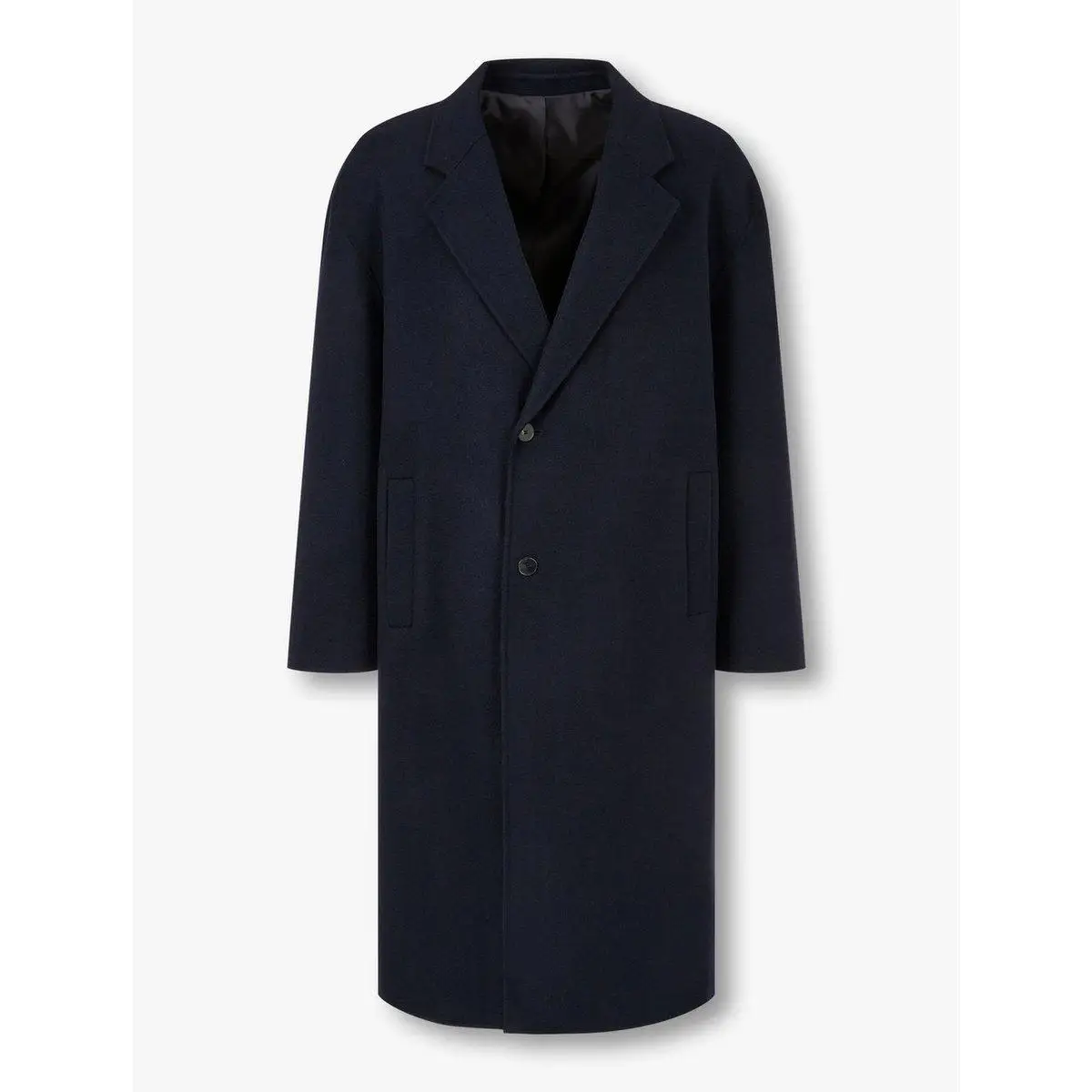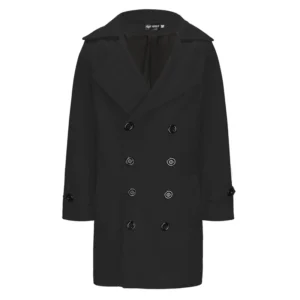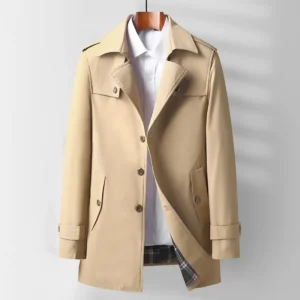Introduction: Tweed – More Than Just a Fabric, A Storied Tradition
Tweed stands as one of menswear’s most distinctive fabrics, instantly recognizable by its robust texture, natural warmth, and remarkable durability. This wool textile, with its characteristic colored flecks and patterns, offers natural water resistance that has served generations of wearers through challenging weather conditions. What makes tweed truly remarkable, however, is not just its practical qualities but its extraordinary journey through social history.
From humble beginnings in the windswept landscapes of Scotland and Ireland, tweed has traveled an unlikely path to become a symbol of sophisticated style. Initially created as protective clothing for farmers and rural workers facing harsh elements, it transformed into a fabric cherished by aristocracy, academics, and fashion enthusiasts alike. This remarkable evolution represents one of menswear’s most fascinating stories of adaptation and enduring appeal.
Today, tweed coats and jackets remain cornerstones of the well-dressed man’s wardrobe, embodying a perfect balance of heritage, craftsmanship, and versatility. Their appeal transcends mere functionality, connecting modern wearers to traditions of quality and authenticity increasingly rare in contemporary fashion. Understanding the right coat length for different body types complements the appreciation of these classic garments, enhancing their timeless silhouette.
The Birth of a Heritage Fabric: Origins in the British Isles
Humble Rural Beginnings
Tweed’s story begins in the late 18th century among the farming and fishing communities of Scotland and Ireland. Unlike the refined fabric we recognize today, early tweed was a coarse, densely woven cloth produced primarily for protection against harsh elements. Local shepherds, farmers, and fishermen needed something that could withstand punishing wind, persistent rain, and cold temperatures while allowing for the physical movement their livelihoods demanded.
The fabric’s original production was entirely local and sustainable by necessity. Wool was sheared from local sheep, hand-carded, spun into yarn on spinning wheels, and finally woven on manual looms in cottages throughout the highlands and islands. This cottage industry approach resulted in a textile deeply connected to specific regions, with colors often derived from local plant dyes that reflected the surrounding landscape—heathers, mosses, berries, and lichens provided subtle browns, greens, blues, and grays.
The Name “Tweed”: A Fortunate Mistake?
The etymology of “tweed” remains the subject of charming debate. The most widely accepted theory suggests it stemmed from a London merchant’s misreading of “tweel,” the Scottish pronunciation of “twill,” a common weaving pattern. This merchant supposedly interpreted the handwritten word as “tweed,” perhaps associating it with the River Tweed that flows along the border between Scotland and England. This fortuitous misinterpretation stuck, giving us the name we use today.
An alternative theory suggests the name directly references the River Tweed itself, as the fabric was commonly produced in the river valley region. Whatever its linguistic origins, the name became firmly established by the early 19th century as the fabric began adapting to various coat lengths to suit different heights and purposes beyond pure utility.
From Countryside to High Society: The Aristocratic Adoption
The Transformation Begins: Sporting Pursuits
Tweed’s remarkable social transformation began in the early 19th century when British aristocrats discovered its practical benefits for country sporting activities. Hunting, shooting, and fishing—leisure pursuits central to upper-class country life—required garments that offered protection from the elements while allowing freedom of movement. Tweed’s durability, weather resistance, and camouflaging earth tones made it perfectly suited for these pursuits, beginning its journey from workwear to leisure wear.
Unlike the rough cloth of rural workers, these new sporting tweeds were refined for aristocratic tastes—still hardy but with improved finish and more sophisticated patterns. This adaptation marked the beginning of tweed’s dual identity as both practical and fashionable.
Royal Influence: The Balmoral Effect
The pivotal moment in tweed’s elevation came through royal patronage. Prince Albert, husband of Queen Victoria, played a transformative role in the 1840s when he purchased Balmoral Castle in Scotland. Embracing Highland culture, he commissioned a unique Balmoral tweed—a granite-colored pattern with subtle overchecks of red and black—for use on the estate. This royal endorsement instantly elevated tweed’s status, making it fashionable among aristocratic circles.
Following Prince Albert’s lead, landowners across Britain began developing distinctive “estate tweeds” for their properties. These unique patterns served practical purposes—identifying gamekeepers and staff as belonging to particular estates—but also became status symbols and expressions of local pride. Many estate tweeds featured colors and patterns reflecting the specific landscape of each property, from heather moorlands to woodland settings.
Social Signifier: The Language of Tweed
By the late Victorian era, tweed had become a complex social signifier. The specific type, quality, and pattern of one’s tweed communicated volumes about social standing, wealth, and connection to landed estates. This period saw tweed evolve from purely functional clothing to an important element of upper-class identity, particularly in country settings. The specific length and style of men’s coats became increasingly important as tweed garments moved from purely practical uses to indicators of social standing and taste.
Classic Tweed Patterns: The Visual Language of Heritage
Tweed’s distinctive patterns form a visual language that connects wearers to centuries of tradition while offering remarkable variety. Each pattern has its own history and character, often linked to specific regions or purposes:
Herringbone: Perhaps the most recognizable tweed pattern, featuring a distinctive zigzag resembling fish bones. This elegant pattern creates visual texture and movement while maintaining a refined appearance, making it particularly versatile for formal and business settings.
Houndstooth (Dogtooth): This bold pattern features a broken checkerboard design of pointed shapes in contrasting colors. Originally serving as effective camouflage for hunters, it has evolved into a distinctive fashion statement. Smaller versions (“puppy tooth”) offer subtlety, while larger variations make stronger visual impacts.
Glen Plaid (Glenurquhart Check): Developed on the Glenurquhart estate near Loch Ness, this sophisticated pattern combines different sized checks and stripes to create a complex, layered appearance. It gained international prominence when the Prince of Wales (later Edward VIII) adopted it in the early 20th century.
Barleycorn: Named for its resemblance to barley grains, this textured pattern features small bobbles or tufts creating a three-dimensional effect. This distinctive texture adds visual interest while maintaining versatility.
Overcheck: This pattern begins with a base (often herringbone or plain weave) and overlays contrasting colored stripes to form a grid. Many estate tweeds utilize this format, with the overcheck colors often reflecting local landscapes.
Donegal: Rather than a specific pattern, Donegal tweed is distinguished by its colorful flecks or “neps” scattered throughout the fabric, traditionally representing the wildflowers of County Donegal in Ireland.
These traditional patterns continue to inspire modern interpretations found in contemporary tweed coats for men, offering options ranging from subtle textures to bold statements.
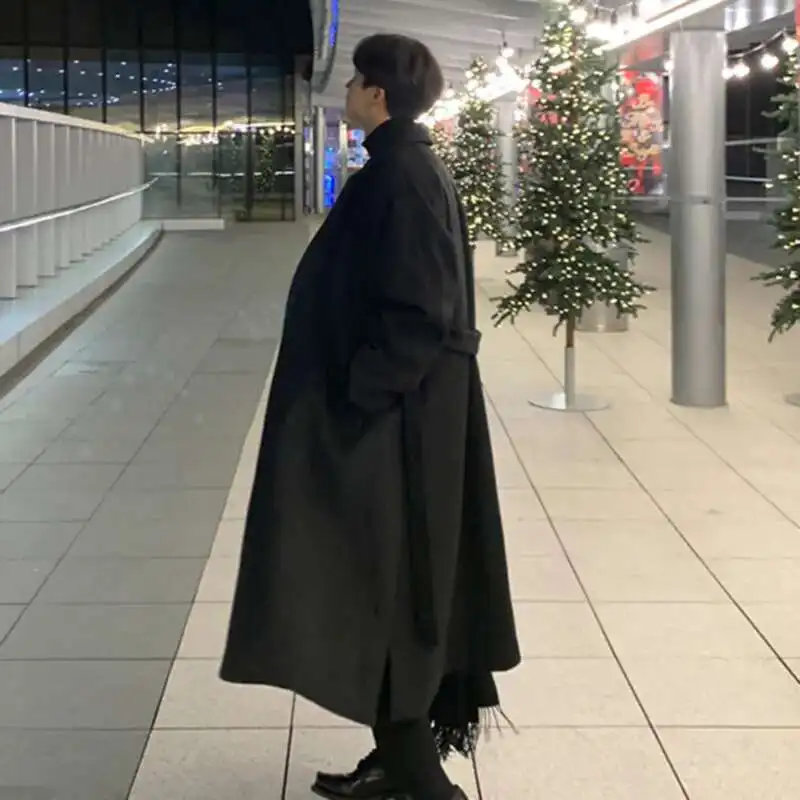
The Evolution of Tweed in Menswear: Iconic Garments
The Norfolk Jacket: Sportsman’s Companion
The late Victorian era saw the development of specialized tweed garments, with the Norfolk jacket emerging as an influential innovation. Designed specifically for shooting, this loose-fitting jacket featured distinctive box pleats for movement, a belted waist, and patch pockets. Originally worn with matching knickerbockers, the Norfolk became the template for sporting tweed jackets, introducing functional details that would influence men’s casual wear for generations.
From Country to City: The Sport Coat Emerges
The early 20th century witnessed tweed’s migration from purely country attire to acceptable city wear, largely through the evolution of the sport coat. Adapted from country shooting jackets but refined for urban environments, tweed sport coats offered a perfect middle ground between formality and comfort. This versatile garment—particularly in herringbone patterns—became essential for business-casual occasions, pairing easily with contrasting trousers.
The Tweed Overcoat: Urban Protection
As tweed gained acceptance in urban settings, the tweed overcoat emerged as a practical yet distinguished outer layer. Typically cut longer and more generously than suit jackets, these coats provided serious protection against winter weather while maintaining a refined appearance suitable for professional settings. The urban tweed overcoat represented an important bridge between country and city sensibilities, helping cement tweed’s place in mainstream menswear.
Academic Associations: The Professor’s Jacket
The interwar period saw tweed develop strong associations with academia and intellectual life. The “professor’s jacket”—typically a tweed sport coat with leather elbow patches—became both practical office wear for academics and a powerful cultural symbol. This association helped tweed maintain relevance even as men’s fashion became increasingly casual throughout the 20th century, positioning it as the thinking person’s choice in tailored clothing.
Full Tweed Suits: The Ultimate Expression
While initially considered too rustic for formal business settings, full tweed suits gradually gained acceptance for certain professional contexts, particularly in Britain. These suits represented the complete integration of a once-rural fabric into urban professional life. Though never as widespread as worsted wool suits, tweed suits became symbols of traditional values and discerning taste, particularly in professions like law, academia, and publishing.
Prestigious Tweed Varieties: Regional Specialties
Harris Tweed: The Protected Legend
No discussion of tweed would be complete without acknowledging the unique status of Harris Tweed. Produced in the Outer Hebrides of Scotland, this legendary fabric has been protected by an Act of Parliament since 1909, making it the only fabric in the world governed by its own law. The Harris Tweed Authority’s orb trademark guarantees that the fabric has been hand-woven by islanders in their homes using traditional methods and 100% pure virgin wool dyed and spun in the Outer Hebrides.
The distinctive character of Harris Tweed comes from its production method—local wool is dyed before spinning, allowing different colored fibers to be blended in endless combinations. This creates the fabric’s characteristic depth and complexity of color. The resulting cloth is remarkably durable yet soft enough for comfortable wear, explaining its enduring appeal in premium wool overcoats.
Donegal Tweed: Ireland’s Colorful Contribution
From County Donegal in northwestern Ireland comes another distinctive tweed variety. Donegal tweed is immediately recognizable by its colorful flecks or “neps” scattered throughout the fabric. Traditionally, these flecks represented the colors of the local landscape—wildflowers, berries, moss, and minerals—creating a fabric that tells the story of its origins.
While less formally protected than Harris Tweed, authentic Donegal tweed maintains strict production standards. Its slightly rougher texture and distinctive appearance make it particularly suitable for casual country wear with unmistakable character.
Shetland Tweed: Lightweight Elegance
From Scotland’s northernmost islands comes Shetland tweed, distinguished by its exceptionally soft, lightweight character. Made from the wool of Shetland sheep—an ancient breed adapted to the harsh local climate—this tweed offers remarkable warmth despite its light weight. Its softness makes it particularly suitable for indoor jackets and suits rather than heavy outerwear.
Cheviot Tweed: Distinctive Crispness
Named after the sheep bred in the Cheviot Hills bordering England and Scotland, Cheviot tweed offers a distinctive crisp texture and excellent durability. The medium-weight wool has a drier, more defined feel than softer tweeds, creating structured garments that hold their shape beautifully. This variety particularly excels in more formal applications where a cleaner, sharper appearance is desired.
The 20th Century Journey: Tweed Through Changing Times
The 20th century presented tweed with unprecedented challenges as menswear underwent radical transformations. Through two world wars, the casual revolution, and shifting workplace norms, tweed demonstrated remarkable adaptability while maintaining its essential character.
Early in the century, tweed briefly entered military service. During World War I, “British warm” officers’ coats made from camel-colored tweed provided protection in trench warfare conditions. These military applications further cemented tweed’s association with durability and protection in harsh environments.
The interwar period saw tweed’s strong association with intellectual and academic life develop. College professors, writers, and artists embraced tweed sport coats as practical workwear that also conveyed a certain thoughtful, intellectual character. This association was reinforced through film and literature, with fictional characters from Sherlock Holmes to numerous film detectives appearing in trademark tweed.
Post-World War II fashion shifts threatened tweed’s relevance as men’s clothing became increasingly casual. Yet rather than disappearing, tweed adapted, becoming more lightweight and finding new roles in the evolving business-casual wardrobe. The fabric’s inherent connection to tradition became an asset during periods of rapid change, offering reassuring continuity and authenticity.
By the late 20th century, designers began rediscovering tweed’s rich heritage and distinctive aesthetics. From Ralph Lauren’s country-inspired collections to avant-garde reinterpretations by designers like Alexander McQueen (himself from a working-class East London family), tweed found new expressions while honoring its essential character.

Modern Resurgence: Tweed in Contemporary Menswear
Recent decades have witnessed a remarkable revival of interest in tweed, driven by several converging trends. The heritage movement in menswear—emphasizing traditional craftsmanship, authenticity, and lasting quality—has positioned tweed as an antidote to disposable fast fashion. Contemporary consumers increasingly value garments with genuine history and production transparency, areas where traditional tweed excels.
Modern designers have successfully reinterpreted tweed for contemporary tastes without sacrificing its essential character. Slimmer cuts, lighter weights, and subtle pattern modifications have made tweed accessible to younger consumers while maintaining connections to tradition. High-profile appearances in film and television—from period dramas to modern interpretations of classic characters—have further cemented tweed’s cultural relevance.
The sustainability movement has also bolstered tweed’s appeal. As a natural fiber traditionally produced in small-batch processes with minimal chemical treatments, tweed aligns with growing environmental consciousness. The fabric’s legendary durability—with well-made tweed jackets often lasting decades—represents the antithesis of throwaway fashion culture.
Tweed has found particular favor among various contemporary style tribes. The classic menswear revival community values its history and versatility, while vintage enthusiasts appreciate its timeless patterns and associations. Even streetwear and contemporary fashion have incorporated tweed elements, recontextualizing this heritage fabric for urban environments and modern wool-blend interpretations.
Why Tweed Endures: The Timeless Appeal of Tweed Coats and Jackets
Tweed’s remarkable persistence in menswear stems from a perfect combination of practical benefits and emotional connections that few other fabrics can match:
Unmatched Durability: Properly cared for, tweed garments can last decades or even generations, making them genuine investment pieces that improve with age.
Natural Temperature Regulation: Wool’s inherent ability to insulate while allowing moisture vapor to escape makes tweed comfortable across a surprisingly wide temperature range.
Textural Depth: The complex patterns, varied colors, and three-dimensional texture of tweed create visual interest and depth impossible to achieve with flatter, simpler fabrics.
Practical Weather Resistance: While not fully waterproof, traditional tweed offers natural water repellency and excellent wind resistance without synthetic treatments.
Versatility Across Settings: Few fabrics transition as seamlessly between casual and formal contexts, making tweed garments remarkably versatile in modern wardrobes.
Beyond these practical benefits, tweed carries powerful symbolic and emotional associations. It connects wearers to traditions of craftsmanship and authenticity increasingly rare in contemporary life. The fabric’s associations with literature, film, and intellectual life give it cultural resonance beyond mere clothing. For many, choosing colors that complement tweed’s natural palette becomes part of a thoughtful approach to personal style that transcends trends.
Selecting and Styling the Perfect Tweed Jacket
Finding the ideal tweed garment begins with understanding quality markers. Superior tweed has a substantial but not stiff hand-feel, with clearly defined patterns and colors that show depth and complexity when examined closely. Construction details matter greatly—look for natural shoulder lines, hand-stitched elements, and quality lining materials that complement the outer fabric.
Styling tweed effectively means embracing its versatility while respecting its heritage character:
Business Settings: Pair a neutral herringbone or subtle check tweed sport coat with solid wool trousers, a light blue or white shirt, and a knit or subtle pattern tie for a refined yet interesting look.
Smart Casual: Combine a tweed jacket with dark jeans or chinos, an oxford cloth button-down shirt, and leather boots or brogues for an effortless blend of casual and formal elements.
Weekend Wear: Layer a heavier tweed coat over a turtleneck sweater or a casual shirt and lightweight sweater, finishing with sturdy boots for a sophisticated outdoors-inspired look.
Seasonal Adaptation: Lighter weight tweeds in brighter patterns work for transitional seasons, while heavier, darker varieties excel in winter. Summer tweeds do exist—often blended with silk or linen—offering the texture without excessive warmth.
Proper care ensures decades of wear from quality tweed. Brush regularly to remove surface dirt, air out between wearings rather than frequent dry cleaning, and store properly on shaped hangers in breathable garment bags. Address minor repairs promptly to prevent larger issues, and occasionally have professional pressing to maintain shape.
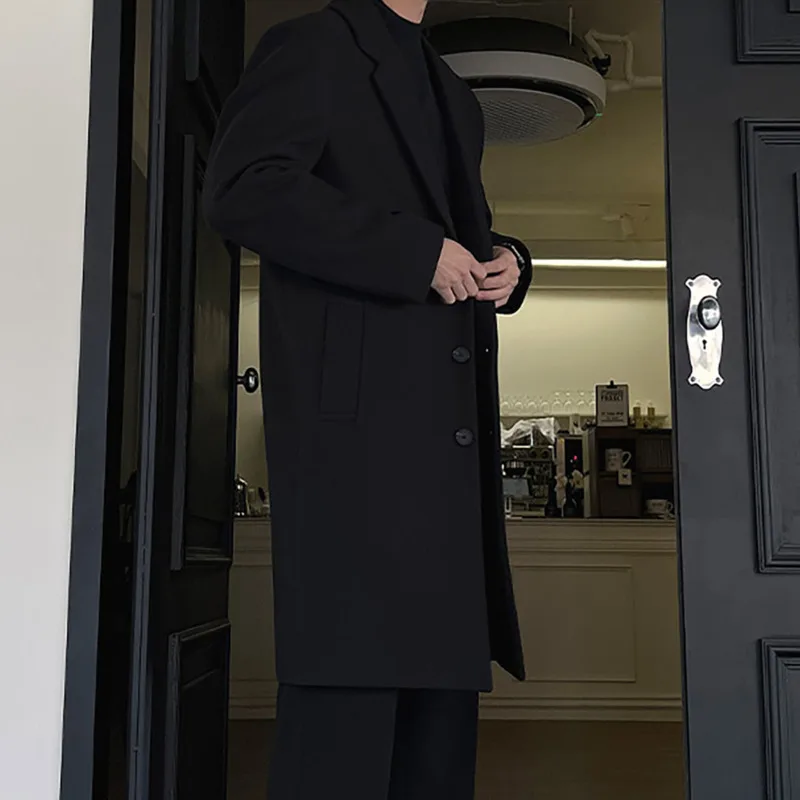
Mens Double Breasted Pea Coat, Mens Wool Blend Coat, Mens Wool Pea Coat
Price range: $136.84 through $157.36 Select options This product has multiple variants. The options may be chosen on the product pageMens Cashmere Overcoat, Mens Hooded Winter Coat, Mens Wool Blend Coat
Price range: $128.72 through $139.68 Select options This product has multiple variants. The options may be chosen on the product pageMens Black Overcoat, Mens Black Wool Coat, Mens Wool Overcoat
$339.18 Select options This product has multiple variants. The options may be chosen on the product pageMens Grey Overcoat, Mens Wool Blend Coat, Mens Wool Overcoat
$201.28 Select options This product has multiple variants. The options may be chosen on the product pageMens Herringbone Coat, Mens Long Overcoat, Mens Wool Overcoat
Price range: $197.16 through $203.69 Select options This product has multiple variants. The options may be chosen on the product pageMens Long Overcoat, Mens Topcoats
Price range: $189.40 through $196.88 Select options This product has multiple variants. The options may be chosen on the product page
Conclusion: The Unfading Allure of Tweed in Men’s Wardrobes
Tweed’s journey from humble origins in the Scottish Highlands to global menswear icon represents one of fashion’s most fascinating evolutions. Through centuries of social, cultural, and technological change, this remarkable fabric has continuously adapted while maintaining its essential character and appeal.
What explains this extraordinary persistence? Beyond its practical virtues, tweed embodies qualities increasingly precious in our contemporary world—authenticity, connection to place, craftsmanship, and sustainability. In an era of disposable fashion and digital ephemerality, tweed offers tangible connections to tradition and lasting quality.
For the modern man, tweed represents not merely clothing but a philosophy—valuing quality over quantity, character over conformity, and personal style over fleeting trends. Whether in a classic vintage-inspired overcoat or a contemporary reinterpretation, tweed continues to offer something increasingly rare: genuine substance behind its style.
Metro Cloak’s Premium Tweed Collection
Metro Cloak approaches tweed with deep reverence for tradition while embracing modern needs for comfort and versatility. Our tweed garments represent a commitment to authentic materials and exceptional craftsmanship, sourced from renowned mills with generations of expertise.
Each Metro Cloak tweed piece undergoes rigorous quality assessment, focusing on fabric weight, pattern consistency, and construction details that ensure both beauty and longevity. Our collection balances classic patterns—herringbone, houndstooth, and glen check—with subtle contemporary proportions and styling.
We pay particular attention to the functional details that elevate tweed from mere fashion to practical luxury: properly reinforced pockets, quality linings chosen for durability and comfort, and thoughtfully designed interior pockets for modern essentials. These careful considerations ensure our tweed garments serve as investment pieces that perform beautifully while developing unique character with every wearing.

